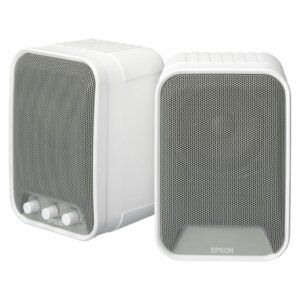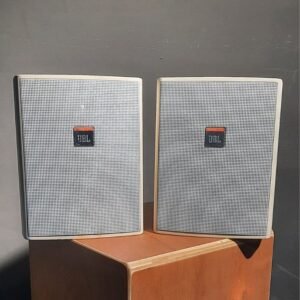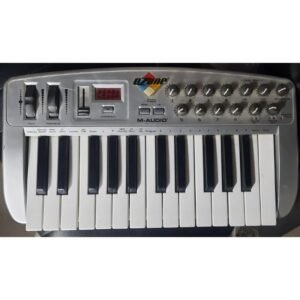Description
The Yamaha PSR-195 is a portable electronic keyboard that was released by Yamaha in 1998. It’s considered an entry-level to intermediate keyboard, designed for beginners and those looking for a simple, fun instrument for learning and casual playing. It’s part of Yamaha’s long-running PSR (PortaSound) series, which focuses on portability and a wide array of built-in features.
Yamaha Psr 195 Key Features:
- 61 Keys: The standard number of keys for most portable keyboards, offering a decent range for learning and playing various musical pieces. These are typically not weighted or semi-weighted keys, but rather synth-action (unweighted) keys.
- Yamaha Education Suite (YES): This was a prominent feature for Yamaha’s entry-level keyboards at the time. YES includes various functions designed to make learning easier:
- Note Navigator: Shows the notes to play for built-in songs.
- Intelligent Single Finger Chord: Simplifies playing chords by allowing you to play full chords with just one finger, suitable for beginners.
- Chord Dictionary: Helps users learn chord notation and hand positions.
- Melody Guide: Guides you through playing melodies of built-in songs by displaying notes on the LCD.
- 100 Voices (Tones): The keyboard offers a variety of instrument sounds, including a digitally sampled stereo grand piano, electric pianos, organs, strings, brass, synths, and a full percussion set. Yamaha’s AWM (Advanced Wave Memory) sampling technology was used for these voices.
- 100 Accompaniment Styles: These are pre-programmed rhythmic and harmonic patterns that provide a backing band for your playing. Styles cover various genres like pop, rock, jazz, country, dance, and waltz.
- 100 Built-in Songs: A collection of pre-recorded songs for listening, learning, and playing along with.
- 16-Note Polyphony: This means the keyboard can play up to 16 notes simultaneously. While sufficient for basic playing and accompaniment, it’s a lower polyphony count compared to modern keyboards, which can have 64, 128, or even 256 notes of polyphony.
- Multi Pads: The keyboard typically includes two multi-pads with 20 banks, allowing you to trigger short musical phrases or effects.
- Effects: Includes basic effects like Dual (layering two voices) and Split (assigning different voices to different sections of the keyboard).
- Metronome Function: A built-in metronome for practicing rhythm and timing.
- LCD Display: A multi-function LCD screen for displaying information about voices, styles, songs, and educational features.
- Built-in Speakers: Stereo speakers with 2 watts each, providing sound without external amplification.
- Portability: Designed to be lightweight and portable, making it easy to move around. It can be powered by either an AC adapter or six D-cell batteries.
Psr 195 Connectivity:
- Headphone/Aux Audio Jack (1/4 inch / 6.35mm TRS): For private practice with headphones or connecting to an external amplifier/PA system.
- Sustain Pedal Connector (1/4 inch / 6.35mm TS): Allows for connection of an optional sustain pedal (sold separately) for more expressive piano playing.
- MIDI Input/Output Jacks (5-pin DIN): This is a significant feature for a keyboard of its era, allowing it to connect to other MIDI-compatible devices (like computers with a MIDI interface, sound modules, or other keyboards) for expanded capabilities, sequencing, and controlling external gear.
- DC Power Input: For connecting the required power adapter (often 12V, 700mA, center pin positive).
Target Audience (Then and Now):
- Beginners: The Yamaha Education Suite features make it an excellent choice for individuals just starting to learn piano or keyboard.
- Casual Players: For those who want a fun and versatile instrument for recreational playing.
- MIDI Enthusiasts (for its time): The MIDI I/O made it a useful tool for connecting to early computer music setups.

















